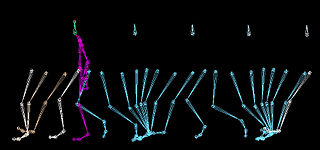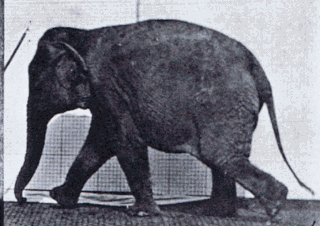
Cross-dressing is the act of wearing clothes traditionally or stereotypically associated with a different gender. From as early as pre-modern history, cross-dressing has been practiced in order to disguise, comfort, entertain, and express oneself.

Heterosexuality is romantic attraction, sexual attraction or sexual behavior between people of the opposite sex or gender. As a sexual orientation, heterosexuality is "an enduring pattern of emotional, romantic, and/or sexual attractions" to people of the opposite sex; it "also refers to a person's sense of identity based on those attractions, related behaviors, and membership in a community of others who share those attractions." Someone who is heterosexual is commonly referred to as straight.

Sexual orientation is an enduring personal pattern of romantic attraction or sexual attraction to persons of the opposite sex or gender, the same sex or gender, or to both sexes or more than one gender. Patterns are generally categorized under heterosexuality, homosexuality, and bisexuality, while asexuality is sometimes identified as the fourth category.

Walking is one of the main gaits of terrestrial locomotion among legged animals. Walking is typically slower than running and other gaits. Walking is defined by an "inverted pendulum" gait in which the body vaults over the stiff limb or limbs with each step. This applies regardless of the usable number of limbs—even arthropods, with six, eight, or more limbs, walk. In humans, walking has health benefits including improved mental health and reduced risk of cardiovascular disease and death.

Gait is the pattern of movement of the limbs of animals, including humans, during locomotion over a solid substrate. Most animals use a variety of gaits, selecting gait based on speed, terrain, the need to maneuver, and energetic efficiency. Different animal species may use different gaits due to differences in anatomy that prevent use of certain gaits, or simply due to evolved innate preferences as a result of habitat differences. While various gaits are given specific names, the complexity of biological systems and interacting with the environment make these distinctions "fuzzy" at best. Gaits are typically classified according to footfall patterns, but recent studies often prefer definitions based on mechanics. The term typically does not refer to limb-based propulsion through fluid mediums such as water or air, but rather to propulsion across a solid substrate by generating reactive forces against it.

Gaydar is a colloquialism referring to the intuitive ability of a person to assess others' sexual orientations as homosexual, bisexual or straight. Gaydar relies on verbal and nonverbal clues and LGBT stereotypes, including a sensitivity to social behaviors and mannerisms like body language, the tone of voice used by a person when speaking, overt rejections of traditional gender roles, a person's occupation, and grooming habits.

Gait analysis is the systematic study of animal locomotion, more specifically the study of human motion, using the eye and the brain of observers, augmented by instrumentation for measuring body movements, body mechanics, and the activity of the muscles. Gait analysis is used to assess and treat individuals with conditions affecting their ability to walk. It is also commonly used in sports biomechanics to help athletes run more efficiently and to identify posture-related or movement-related problems in people with injuries.

The Tennessee Walking Horse or Tennessee Walker is a breed of gaited horse known for its unique four-beat running-walk and flashy movement. It was originally developed as a riding horse on farms and plantations in the American South. It is a popular riding horse due to its calm disposition, smooth gaits and sure-footedness. The Tennessee Walking Horse is often seen in the show ring, but is also popular as a pleasure and trail riding horse using both English and Western equipment. Tennessee Walkers are also seen in movies, television, and other entertainment.

Robert Beck, better known as Iceberg Slim, was an American former pimp who later became a writer. Beck's novels were adapted into films.

David Michael Buss is an American evolutionary psychologist at the University of Texas at Austin, researching human sex differences in mate selection. He is considered one of the founders of evolutionary psychology.
Gender expression, or gender presentation, is a person's behavior, mannerisms, and appearance that are socially associated with gender, namely femininity or masculinity. Gender expression can also be defined as the external manifestation of one's gender identity through behavior, clothing, hairstyles, voice, or body characteristics. Typically, a person's gender expression is thought of in terms of masculinity and femininity, but an individual's gender expression may incorporate both feminine and masculine traits, or neither. A person's gender expression may or may not match their assigned sex at birth. This includes gender roles, and accordingly relies on cultural stereotypes about gender. It is distinct from gender identity.

High-heeled shoes, also known as high heels or pumps, are a type of shoe with an upward-angled sole. The heel in such shoes is raised above the ball of the foot. High heels cause the legs to appear longer, make the wearer appear taller, and accentuate the calf muscle.

Portrait painting is a genre in painting, where the intent is to represent a specific human subject. The term 'portrait painting' can also describe the actual painted portrait. Portraitists may create their work by commission, for public and private persons, or they may be inspired by admiration or affection for the subject. Portraits often serve as important state and family records, as well as remembrances.

An ambling gait or amble is any of several four-beat intermediate horse gaits, all of which are faster than a walk but usually slower than a canter and always slower than a gallop. Horses that amble are sometimes referred to as "gaited", particularly in the United States. Ambling gaits are smoother for a rider than either the two-beat trot or pace and most can be sustained for relatively long periods, making them particularly desirable for trail riding and other tasks where a rider must spend long periods in the saddle. Historically, horses able to amble were highly desired for riding long distances on poor roads. Once roads improved and carriage travel became popular, their use declined in Europe but continued in popularity in the Americas, particularly in areas where plantation agriculture was practiced and the inspection of fields and crops necessitated long daily rides.
Human male sexuality encompasses a wide variety of feelings and behaviors. Men's feelings of attraction may be caused by various physical and social traits of their potential partner. Men's sexual behavior can be affected by many factors, including evolved predispositions, individual personality, upbringing, and culture. While most men are heterosexual, there are minorities of homosexual men and varying degrees of bisexual men.

Homosexuality is a sexual attraction, romantic attraction, or sexual behavior between members of the same sex or gender. As a sexual orientation, homosexuality is "an enduring pattern of emotional, romantic, and/or sexual attractions" exclusively to people of the same sex or gender. It "also refers to a person's sense of identity based on those attractions, related behaviors, and membership in a community of others who share those attractions."
The Racking Horse is a horse breed derived from the Tennessee Walking Horse, recognized by the USDA in 1971. It is known for a distinctive singlefoot gait. In 1971, the Racking Horse Breeders' Association of America, headquartered in Decatur, Alabama, was formed as the breed registry. Its goal is to preserve the breed in a natural state with little or no artificial devices that enhance gait. The horse's tail is naturally raised without nicking or tail sets. Some classes allow special shoes that enhance action, and a relatively newer class allows the use of chains, six ounces and under as action devices. The practice of soring, illegal under the Horse Protection Act of 1970, is also seen within the Racking Horse world. Since the breed's inception, about 80,000 Racking Horses have been registered, with the largest populations located in the US states of Alabama and Tennessee.
Sexual slang is a set of linguistic terms and phrases used to refer to sexual organs, processes, and activities; they are generally considered colloquial rather than formal or medical, and some may be seen as impolite or improper.
Jereed is a traditional Turkish equestrian team sport played outdoors on horseback in which the objective is to score points by throwing a blunt wooden javelin at opposing team's horsemen. Played by Turkic peoples in Central Asia as the essential sporting and ceremonial game, it was brought to Anatolia during the westward migration in the beginning of the 11th century.
Social vision is a sub-topic of social psychology that investigates the ways from which individuals extract information and perceive others using their vision alone. The field of social vision is highly interdisciplinary and located at the nexus of social psychology, communication studies, and vision science.












